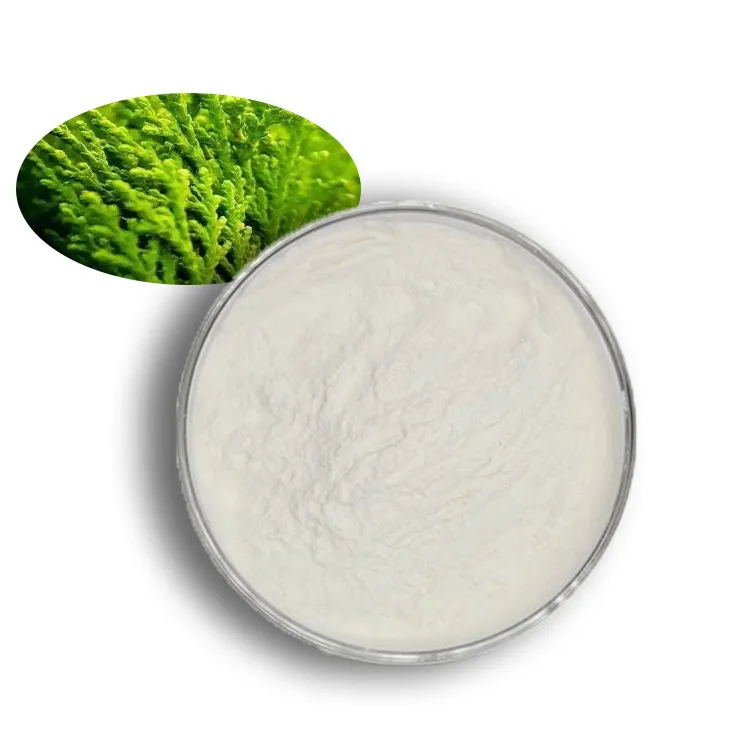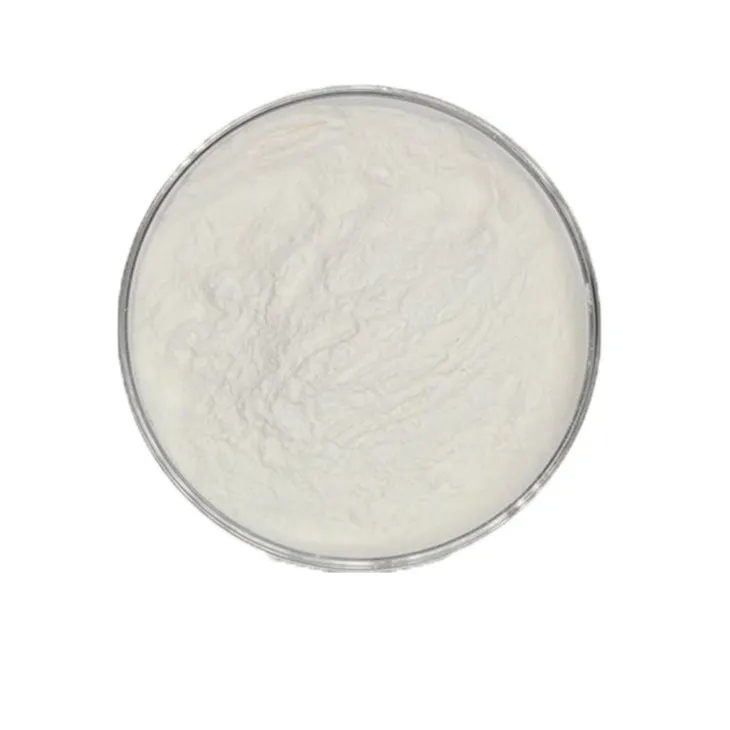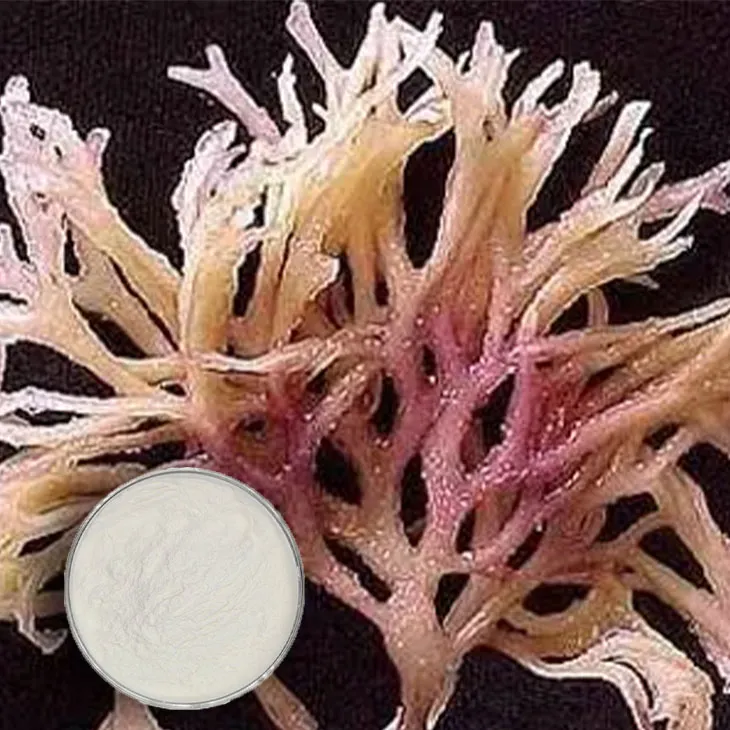- 0086-571-85302990
- sales@greenskybio.com
The Magic of Carrageenan Extract Powder: A Comprehensive Guide
2024-11-13

1. Introduction
Carrageenan Extract Powder has been making waves in various industries, and for good reasons. It is a versatile substance with a wide range of applications. Carrageenan is a type of polysaccharide that is extracted from red seaweeds, specifically from the families Gigartinaceae and Solieriaceae. The extraction process results in a powder form that is easy to handle, store, and use in different processes.

2. Chemical Composition
2.1. Structure
Carrageenan molecules are composed of repeating galactose units and 3,6 - anhydro - galactose units. The different types of carrageenan, namely kappa - carrageenan, iota - carrageenan, and lambda - carrageenan, vary in their sulfate content and the way these units are linked together. For example, kappa - carrageenan has a relatively high gel - forming ability due to its specific chemical structure. It forms strong, brittle gels in the presence of potassium ions.2.2. Properties
The chemical composition of Carrageenan Extract Powder endows it with unique properties. It is soluble in hot water, and the resulting solutions can have different viscosities depending on the type and concentration of carrageenan. This solubility makes it suitable for various applications where a liquid or semi - liquid medium is required. Additionally, its ability to interact with other substances, such as proteins, is also related to its chemical structure. This interaction can be exploited in food formulations to improve texture and stability.
3. Sources of Carrageenan
3.1. Red Seaweeds
As mentioned earlier, carrageenan is sourced from red seaweeds. These seaweeds are typically found in coastal regions around the world. Some of the common species used for carrageenan extraction include Chondrus crispus, also known as Irish moss, and Eucheuma cottonii. The harvesting of these seaweeds is carefully regulated in many countries to ensure sustainable use.3.2. Cultivation and Harvesting
In recent years, there has been an increase in the cultivation of seaweeds for carrageenan production. Cultivation methods range from traditional small - scale farming in tidal pools to large - scale offshore cultivation. Once the seaweeds reach maturity, they are harvested. The harvested seaweeds are then processed to extract carrageenan. This process involves washing, boiling, and filtration steps to obtain the pure carrageenan extract, which is then dried into powder form.
4. Applications in Food
4.1. Thickening Agent
One of the most common uses of Carrageenan Extract Powder in the food industry is as a thickening agent. It is added to a variety of products such as dairy products (e.g., ice cream, yogurt), sauces, and soups. In ice cream, for example, carrageenan helps to prevent ice crystal formation and gives the product a smooth and creamy texture. In sauces and soups, it provides the desired thickness without significantly affecting the flavor.4.2. Gelling Agent
Carrageenan also functions as an excellent gelling agent. In products like jellies, puddings, and some meat products, it forms gels that hold the product together. Different types of carrageenan are used depending on the desired gel strength and texture. For instance, iota - carrageenan is often used in dairy - based gels as it provides a softer and more elastic texture compared to kappa - carrageenan.4.3. Stabilizer
In food products, carrageenan acts as a stabilizer. It helps to maintain the emulsion in products like salad dressings and cream - based products. By preventing the separation of oil and water phases, it prolongs the shelf - life of these products and ensures a consistent texture throughout their storage period.5. Applications in Pharmaceuticals
5.1. Tablet Binders
In the pharmaceutical industry, carrageenan extract powder can be used as a tablet binder. It helps to hold the active ingredients and other excipients together in a tablet form. This is crucial for ensuring the integrity of the tablet during handling, packaging, and transportation. Moreover, carrageenan - based tablets can have good disintegration properties, allowing for proper release of the active ingredients in the body.5.2. Controlled - Release Systems
Carrageenan has also been explored for use in controlled - release systems. Due to its ability to form gels and its interaction with other substances, it can be used to encapsulate drugs and release them in a controlled manner over time. This can improve the efficacy of drugs by ensuring a more sustained release profile, reducing the frequency of dosing required for patients.5.3. Suspending Agent
As a suspending agent, carrageenan can keep insoluble drug particles in suspension in liquid formulations. This is important for drugs that are not completely soluble in the vehicle but need to be evenly distributed for accurate dosing. The use of carrageenan helps to prevent sedimentation of the drug particles and ensures a homogeneous suspension.6. Other Applications
6.1. Cosmetics
In the cosmetics industry, carrageenan extract powder can be found in various products. It is used as a thickener and stabilizer in creams, lotions, and gels. For example, in a facial cream, it can help to give the product a smooth and luxurious texture while also providing stability to the emulsion. Additionally, carrageenan's natural origin may be appealing to consumers who prefer products with more natural ingredients.6.2. Biotechnology
In biotechnology, carrageenan has potential applications in cell culture and tissue engineering. It can be used as a matrix for cell growth, providing a three - dimensional structure that mimics the natural extracellular matrix. This can support the growth and differentiation of cells in vitro, and potentially be used in the development of tissue - engineered products in the future.6.3. Industrial Applications
In industrial settings, carrageenan can be used as a binder in the production of paper and cardboard. It can improve the strength and water resistance of these materials. Additionally, it has been explored for use in the oil and gas industry as a viscosifier in drilling fluids. By increasing the viscosity of the drilling fluid, it can help to carry cuttings to the surface more efficiently and prevent wellbore collapse.7. Safety and Regulatory Considerations
7.1. Food - Grade Carrageenan
Food - grade carrageenan is generally recognized as safe (GRAS) by regulatory authorities in many countries. However, there has been some debate regarding its safety in recent years. Some studies have suggested potential links between high - dose carrageenan consumption and adverse health effects, such as inflammation in the digestive tract. However, the majority of scientific evidence supports its safety when used in accordance with approved levels.7.2. Pharmaceutical - Grade Carrageenan
For pharmaceutical - grade carrageenan, strict quality control and regulatory requirements are in place. It must meet purity standards and be tested for various parameters such as microbial contamination and endotoxin levels. This ensures that it is safe for use in pharmaceutical products where it comes into direct contact with the human body.8. Market Trends and Future Outlook
The market for carrageenan extract powder has been growing steadily in recent years. The increasing demand for natural and clean - label ingredients in the food industry has contributed to its popularity. Additionally, its expanding applications in pharmaceuticals, cosmetics, and other industries are expected to drive further growth. However, challenges such as sustainable sourcing of seaweeds and competition from other hydrocolloids also exist. In the future, research is likely to focus on developing new applications for carrageenan and improving the extraction and purification processes to enhance its quality and performance.
FAQ:
What is carrageenan extract powder?
Carrageenan extract powder is a type of polysaccharide that is derived from red seaweeds. It is composed of repeating galactose units and sulfate esters. There are different types of carrageenans, such as kappa - carrageenan, iota - carrageenan, and lambda - carrageenan, each with distinct chemical and physical properties.
What are the main uses of carrageenan extract powder in the food industry?
In the food industry, carrageenan extract powder is widely used as a thickening and gelling agent. It can improve the texture and stability of various products. For example, in dairy products like ice cream, it helps prevent ice crystal formation and gives a smooth texture. In processed meats, it can enhance water - binding capacity and improve the overall quality of the product.
How does carrageenan extract powder function in pharmaceuticals?
In pharmaceuticals, carrageenan extract powder can be used for drug delivery systems. It can form gels that can encapsulate drugs and control their release. Additionally, its biocompatible nature makes it suitable for some medical applications such as wound dressings, where it can help in maintaining a moist environment and promoting healing.
Is carrageenan extract powder safe for consumption?
When used within regulatory limits, carrageenan extract powder is generally considered safe for consumption. Regulatory bodies around the world have set limits on its use in food products. However, some studies have raised concerns about high - molecular - weight carrageenans and potential effects on the digestive system at very high doses, but more research is needed to fully understand these aspects.
How is carrageenan extract powder produced?
The production of carrageenan extract powder involves several steps. First, the red seaweeds are harvested. Then, they are washed to remove impurities. After that, the seaweeds are treated with alkali solutions to extract the carrageenan. The extract is then purified, filtered, and finally dried to obtain the powder form.
Related literature
- Carrageenan: Structure, Properties, and Applications"
- "The Role of Carrageenan in Food Science and Technology"
- "Carrageenan Extracts: From Seaweed to Functional Ingredient"
- ▶ Hesperidin
- ▶ Citrus Bioflavonoids
- ▶ Plant Extract
- ▶ lycopene
- ▶ Diosmin
- ▶ Grape seed extract
- ▶ Sea buckthorn Juice Powder
- ▶ Fruit Juice Powder
- ▶ Hops Extract
- ▶ Artichoke Extract
- ▶ Mushroom extract
- ▶ Astaxanthin
- ▶ Green Tea Extract
- ▶ Curcumin
- ▶ Horse Chestnut Extract
- ▶ Other Product
- ▶ Boswellia Serrata Extract
- ▶ Resveratrol
- ▶ Marigold Extract
- ▶ Grape Leaf Extract
- ▶ New Product
- ▶ Aminolevulinic acid
- ▶ Cranberry Extract
- ▶ Red Yeast Rice
- ▶ Red Wine Extract
-
Scutellaria Extract
2024-11-13
-
Diosmin
2024-11-13
-
Mangosteen extract powder
2024-11-13
-
Rose Hip Extract
2024-11-13
-
American Ginseng Root Extract
2024-11-13
-
Beetroot juice Powder
2024-11-13
-
Boswellia Serrata Extract
2024-11-13
-
Bilberry Extract
2024-11-13
-
Dan Shen Root Extract/Salvia Root Extract
2024-11-13
-
Lotus leaf extract
2024-11-13





















